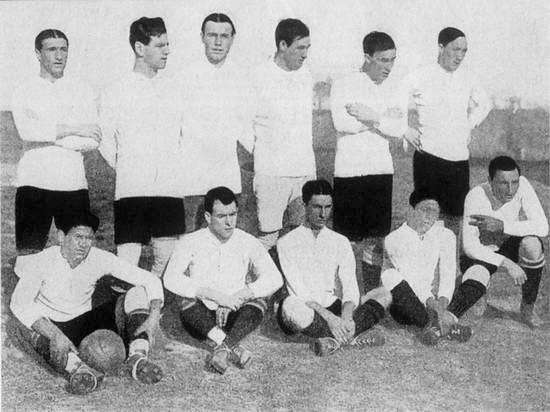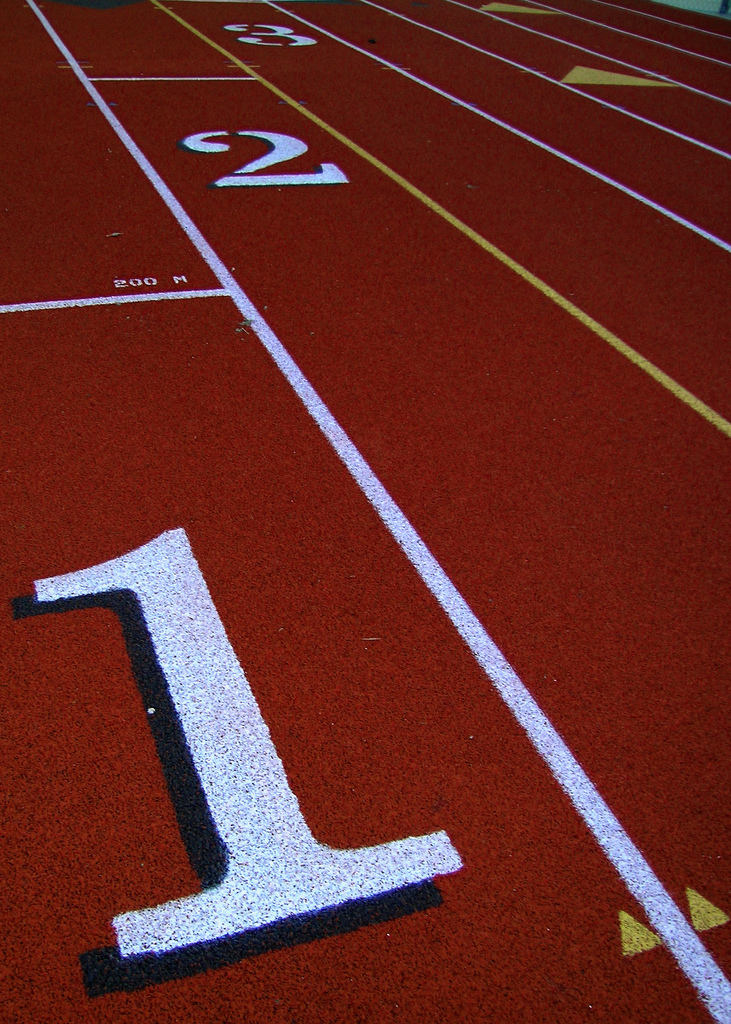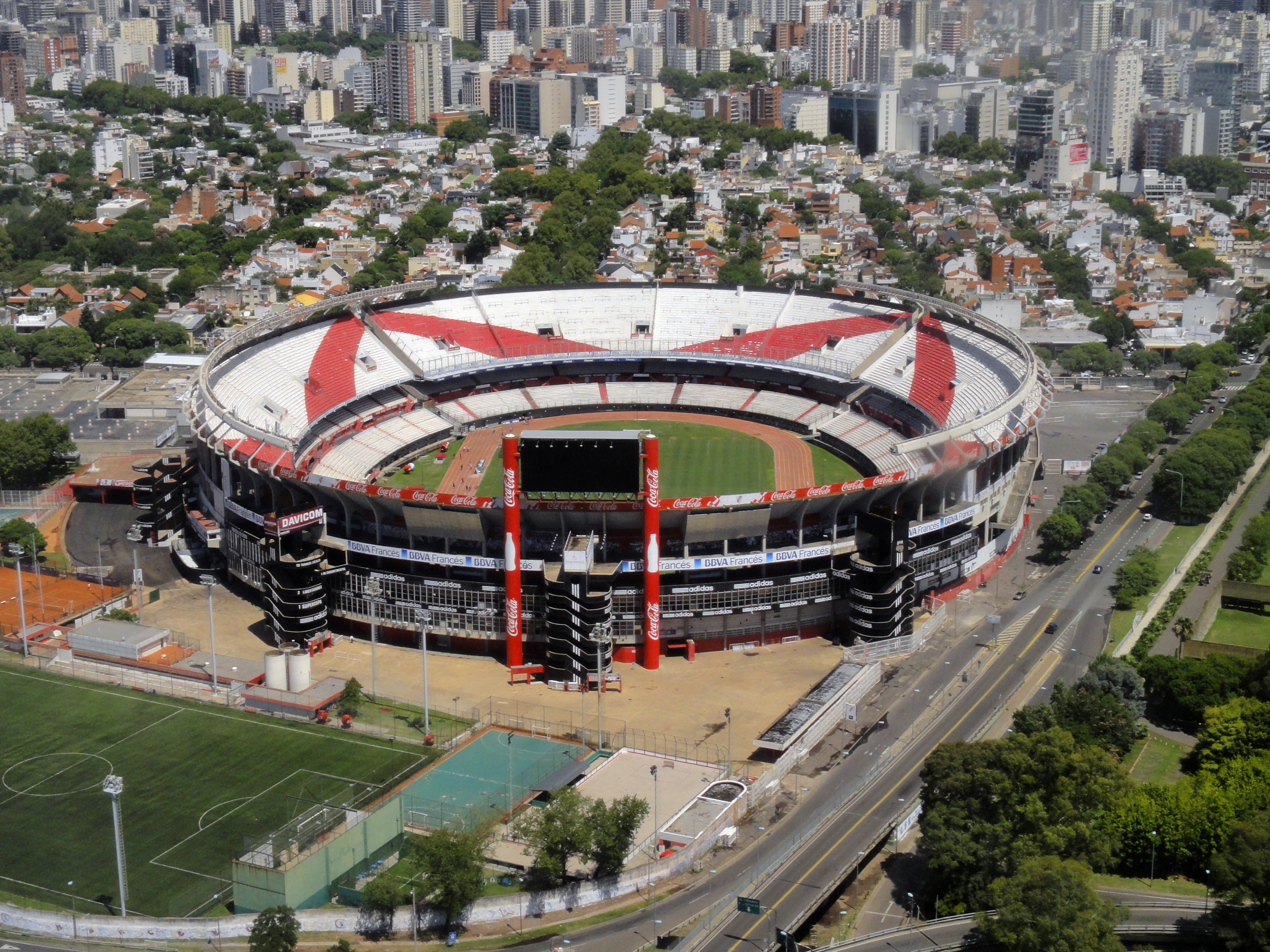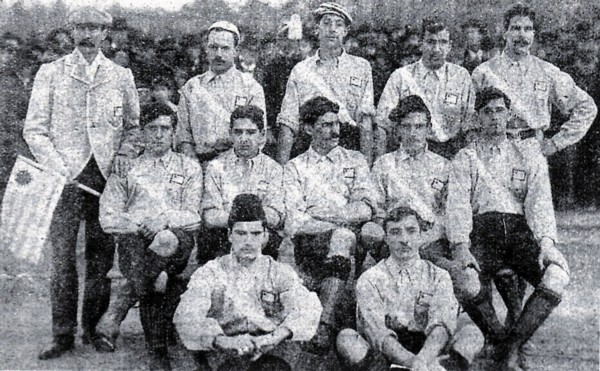|
Parque Pereira
Parque Pereira was a multi-use stadium in Montevideo, Uruguay. It was used mostly for association football matches and was used as a venue during the 1917 South American Championship. The stadium (one of the first in Latin America)Pista Oficial de Atletismo on CH Municipio held 40,000 people and was located near the actual Estadio Centenario. History Parque Pereira was built under the responsibility of National Commission of Physical Education of Uruguay. The first football match played there was the classic Peñarol-Club Nacional de Football, Nacional, on October 28, 1917 with an attendance of 20,000 people. Nacional won by 4-2. The record for that stadium was 40,000 spectators in the 1917 South American championship final where Uruguay national football team, Uruguay won its second consecutive Copa Amé ...[...More Info...] [...Related Items...] OR: [Wikipedia] [Google] [Baidu] |
1917 South American Championship
The 1917 South American Championship of Nations was the second edition of the continental tournament now known as the Copa América. It was held in Montevideo, Uruguay from 30 September to 14 October 1917. Hosts Uruguay retained the title after winning 1–0 over Argentina in the last match of the competition. Ángel Romano from Uruguay finished as the top scorer of the tournament with 4 goals. Format There was no qualifying for the tournament. The participating countries were Argentina, Brazil, Chile and Uruguay. All teams competed between each other in a single group. The one with the best position after the matches was the champion. Two points were awarded for a win, one for a draw, and zero for a defeat. Squads Venues All the matches were played at Parque Pereira, a 40,000 seater multi-use stadium in Montevideo. Final round Each team played one match against each of the other teams. Two points were awarded for a win, one point for a draw and zero points for a defeat ... [...More Info...] [...Related Items...] OR: [Wikipedia] [Google] [Baidu] |
Copa América
The Copa América ( en, America Cup) or CONMEBOL Copa América, known until 1975 as the South American Football Championship (''Campeonato Sudamericano de Fútbol'' in Spanish and ''Campeonato Sul-Americano de Futebol'' in Portuguese), is the top men's football tournament contested among national teams from South America. It is the oldest still-running continental football competition, as well as the third most watched in the world. The competition determines the champions of South America. Since the 1990s, teams from North America and Asia have also been invited to compete. Since 1993, the tournament has generally featured 12 teams—all 10 CONMEBOL teams and two additional teams from other confederations. Mexico participated in every tournament between 1993 and 2016, with one additional team drawn from CONCACAF, except for 1999, when AFC team Japan filled out the 12-team roster, and 2019, which featured Japan and Qatar. The 2016 version of the event, Copa América Cente ... [...More Info...] [...Related Items...] OR: [Wikipedia] [Google] [Baidu] |
Multi-purpose Stadiums In Uruguay
Multi-purpose is something that has more than one purpose and may more specifically refer to: Buildings * Arena * Auditorium * Civic center * Coliseum * Convention center * Facility * Gymnasium, also called "Multi-Purpose Room" (MPR) * Multi-purpose stadium * Music venue * Sports venue Vehicles * Multi-Purpose Crew Vehicle, spacecraft * Multi-purpose helicopter * Multi-Purpose Logistics Module, Space Shuttle cargo container * Multi-purpose vehicle, minivan * Multi-purpose vessel, cargo ship/freighter Other uses * Multi-Purpose Food * Multi-purpose reef * Multi-purpose tool A multi-tool (or multitool) is a hand tool that combines several individual functions in a single unit. The smallest are credit-card or key sized units designed for carrying in a wallet or on a keyring, but others are designed to be carried i ... * Multi-Purpose Viewer, a software program See also * * * Purpose (other) {{disambiguation ... [...More Info...] [...Related Items...] OR: [Wikipedia] [Google] [Baidu] |
South American Championship 1919
The 1919 Copa América, South American Championship of Nations was the third continental championship for South American national football teams. It was held in Rio de Janeiro, Brazil from 11 to 29 May 1919. The participating countries were Brazil national football team, Brazil, Argentina national football team, Argentina, Chile national football team, Chile and Uruguay national football team, Uruguay as the defending champion. After finishing tied in the group standings on points, host Brazil beat Uruguay in the playoff match to win their first title. The playoff was the longest match in the competition's history, and under current rules, will remain so indefinitely: with the scores tied 0-0 after 90 minutes had expired, both captains and the referee agreed to play an extra time (football), extra time period of two 30 minute periods, meaning the playoff match lasted 150 minutes. Format There was no qualifying for the tournament. The participating countries were Argentina, Br ... [...More Info...] [...Related Items...] OR: [Wikipedia] [Google] [Baidu] |
Rio De Janeiro
Rio de Janeiro ( , , ; literally 'River of January'), or simply Rio, is the capital of the state of the same name, Brazil's third-most populous state, and the second-most populous city in Brazil, after São Paulo. Listed by the GaWC as a beta global city, Rio de Janeiro is the sixth-most populous city in the Americas. Part of the city has been designated as a World Heritage Site, named "Rio de Janeiro: Carioca Landscapes between the Mountain and the Sea", on 1 July 2012 as a Cultural Landscape. Founded in 1565 by the Portuguese, the city was initially the seat of the Captaincy of Rio de Janeiro, a domain of the Portuguese Empire. In 1763, it became the capital of the State of Brazil, a state of the Portuguese Empire. In 1808, when the Portuguese Royal Court moved to Brazil, Rio de Janeiro became the seat of the court of Queen Maria I of Portugal. She subsequently, under the leadership of her son the prince regent João VI of Portugal, raised Brazil to the dignity of a k ... [...More Info...] [...Related Items...] OR: [Wikipedia] [Google] [Baidu] |
Estádio Das Laranjeiras
Estádio Manoel Schwartz, usually known as Estádio das Laranjeiras, is a historic football stadium in Rio de Janeiro state, Brazil. The stadium holds 2,000 spectators. It was built in 1905 and is one of the oldest stadiums in Brazil. The stadium is owned by Fluminense Football Club. History Fluminense acquired a plot at Guanabara Street (currently named Pinheiro Machado street) in 1902. The stadium bleachers were built in 1905 and its maximum capacity was 5,000 people. The Brazil national football team played its first match in 1914, at Laranjeiras Stadium, against Exeter City, of England. The match ended 2–0 to Brazil. The stadium was renovated in 1919 and its capacity was expanded to 19,000 people. The re-inaugural match was played on May 11 of that year, when the Brazil national football team beat the Chile national football team 6–0. The first goal of the stadium after the re-inauguration was scored by Brazil's Friedenreich. In the same year, Brazil hosted the So ... [...More Info...] [...Related Items...] OR: [Wikipedia] [Google] [Baidu] |
Avellaneda
Avellaneda (, ) is a port city in the province of Buenos Aires, Argentina, and the seat of the Avellaneda Partido, whose population was 342,677 as per the . Avellaneda is located within the Greater Buenos Aires metropolitan area, and is connected to neighboring Buenos Aires by several bridges over the Riachuelo River. Overview Located on land granted to Adelantado Juan Torres de Vera y Aragón by Captain Juan de Garay in 1620, a port settlement known as ''Puerto del Riachuelo'' first emerged here in 1731. Established as ''Barracas al Sur'' on April 7, 1852, by Quilmes Justice of the Peace Martín José de la Serna, the town grew to become a major rail center during the late 19th century. It was renamed on January 11, 1904, after former President Nicolás Avellaneda. It was declared a city on October 23, 1895, and its population has been stable since around 1960. Avellaneda is one of the foremost wholesale and industrial centers of Argentina. The city's largest employers are te ... [...More Info...] [...Related Items...] OR: [Wikipedia] [Google] [Baidu] |
Estadio Racing Club
The Estadio Racing Club, popularly known as Estadio Alsina y Colón, was an association football stadium in Avellaneda, a suburb of Greater Buenos Aires, Argentina. It was the home ground of Racing Club before they moved to Estadio Juan Domingo Perón in 1950, and was located in the intersection of Alsina and Colón streets, hence been sometimes referred as 'Estadio de Alsina y Colón'. The stadium held 30,000 spectators. It was one of two stadiums that hosted the first Copa América in 1916, along with Gimnasia y Esgrima. The stadium was closed in December 1946 to build the Estadio Presidente Juan Domingo Perón which was inaugurated in 1950. History After spending some time in other locations, Racing Club returned to Alsina and Colón streets in 1906. The stadium hosted not only football matches but other sporting events. On May 7, 1911, Racing debuted in Primera División playing in "Alsina y Colón" vs San Isidro, becoming the first Racing's top division match held in th ... [...More Info...] [...Related Items...] OR: [Wikipedia] [Google] [Baidu] |
All-weather Running Track
An all-weather running track is a rubberized, artificial running surface for track and field athletics. It provides a consistent surface for competitors to test their athletic ability unencumbered by adverse weather conditions. Historically, various forms of dirt, Rocks, sand, and crushed cinders were used. Many examples of these varieties of track still exist worldwide. Surfaces Starting in the late 1950s, artificial surfaces using a combination of rubber and asphalt began to appear. An artificial warm-up track was constructed for the 1956 Summer Olympics in Melbourne, Australia. During the 1960s many of these tracks were constructed; examples still exist today. In the mid-1960s Tartan tracks were developed, surfaced with a product by 3M. The name ''Tartan'' is a trademark, but it is sometimes used as a genericized trademark. This process was the first to commercialize a polyurethane surface for running tracks, though it was originally conceived for horse racing. Many Ta ... [...More Info...] [...Related Items...] OR: [Wikipedia] [Google] [Baidu] |
Argentina National Football Team
The Argentina national football team represents Argentina in men's international football and is administered by the Argentine Football Association, the governing body for football in Argentina. Nicknamed ''La Albiceleste'' ('The White and Sky Blue'), they are the reigning world champions, having won the most recent World Cup in 2022. Overall, Argentina has appeared in a World Cup final six times; a record surpassed only by Brazil and Germany; Argentina played in the first ever final in 1930, which they lost 4–2 to their South American rival Uruguay. Argentina's next final appearance came 48 years later, in 1978, when the team captained by Daniel Passarella defeated the Netherlands 3–1 in extra time, being crowned world champions for the first time. Captained by Diego Maradona, Argentina won their second World Cup eight years later, in 1986, with a 3–2 final victory over West Germany. They reached the final once more under the guidance of Maradona, in 1990, but were ... [...More Info...] [...Related Items...] OR: [Wikipedia] [Google] [Baidu] |
Uruguay National Football Team
The Uruguay national football team ( es, Selección de fútbol de Uruguay) represents Uruguay in international Association football, football, and is controlled by the Uruguayan Football Association, the governing body for football in Uruguay. The Uruguayan team is commonly referred to as ''La Celeste'' (The Sky Blue). Regarded to be one of the greatest footballing nations of all time, Uruguay has won the Copa América 15 times being tied with Argentina for the most titles in the history of the tournament. Uruguay won their most recent title in 2011 Copa América, 2011. Additionally, Uruguay are the holders of Four stars above Uruguay's football crest, four FIFA World Championships: The team has won the FIFA World Cup twice, including the first World Cup in 1930 FIFA World Cup, 1930 as hosts, defeating Argentina 4–2 in the final. Their second title came in 1950 FIFA World Cup, 1950, upsetting host Brazil 2–1 in the final match, which had the highest attendance for a football ... [...More Info...] [...Related Items...] OR: [Wikipedia] [Google] [Baidu] |
Montevideo
Montevideo () is the Capital city, capital and List of cities in Uruguay, largest city of Uruguay. According to the 2011 census, the city proper has a population of 1,319,108 (about one-third of the country's total population) in an area of . Montevideo is situated on the southern coast of the country, on the northeastern bank of the Río de la Plata. The city was established in 1724 by a Spanish soldier, Bruno Mauricio de Zabala, as a strategic move amidst the Spanish people, Spanish-Portuguese people, Portuguese dispute over the La Plata Basin, platine region. It was also under brief British invasions of the Río de la Plata, British rule in 1807, but eventually the city was retaken by Spanish criollos who defeated the British invasions of the River Plate. Montevideo is the seat of the administrative headquarters of Mercosur and ALADI, Latin America's leading trade blocs, a position that entailed comparisons to the role of Brussels in Europe. The 2019 Mercer's report on qual ... [...More Info...] [...Related Items...] OR: [Wikipedia] [Google] [Baidu] |





.jpg)



